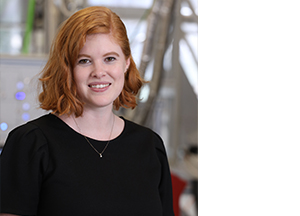 Nanodevices with controllable, topologically non-trivial phases have the potential to enable the development of electronic devices with ultra-low energy dissipation. This talk will discuss progress towards this goal in the framework of reproducible and robust topologically non-trivial phases in lithographically-defined nanostructures in high-mobility semiconductor heterostructures. Topological phases in a 2D system such as the quantum spin hall effect where the conductance occurs only along the edge of the system are analogous to topological 1D conductance in a quantum wire. However 2D systems can be challenging platforms for disentangling confounding effects of disorder, scattering, and charge puddles that can limit the length scale of topological edge states. This year we have started a new project to study topological states in clean, ballistic lithographically defined 1D systems through straightforward transport measurements and direct energy spectroscopy. In collaboration with theorists from University Wisconsin-Madison we can individually and collectively model the effects of disorder, scattering and charge puddles and make direct comparison to experiment. We aim to provide tangible insights into the factors limiting the achievement of robust and reproducible topological states over large length scales in semiconductor nanostructures.
Nanodevices with controllable, topologically non-trivial phases have the potential to enable the development of electronic devices with ultra-low energy dissipation. This talk will discuss progress towards this goal in the framework of reproducible and robust topologically non-trivial phases in lithographically-defined nanostructures in high-mobility semiconductor heterostructures. Topological phases in a 2D system such as the quantum spin hall effect where the conductance occurs only along the edge of the system are analogous to topological 1D conductance in a quantum wire. However 2D systems can be challenging platforms for disentangling confounding effects of disorder, scattering, and charge puddles that can limit the length scale of topological edge states. This year we have started a new project to study topological states in clean, ballistic lithographically defined 1D systems through straightforward transport measurements and direct energy spectroscopy. In collaboration with theorists from University Wisconsin-Madison we can individually and collectively model the effects of disorder, scattering and charge puddles and make direct comparison to experiment. We aim to provide tangible insights into the factors limiting the achievement of robust and reproducible topological states over large length scales in semiconductor nanostructures.
About the presenter
Karina Hudson is an Associate Investigator working within FLEET’s Research Theme 1: Topological materials with Prof Alex Hamilton at UNSW, where she studies spin-orbit interaction in 1D and 2D systems. Karina fabricates and performs low-temperature transport measurements on quantum point contacts in semiconductor heterostructures, probing how device design and material choice influence spin behaviour.
Karina is currently a Sydney Quantum Academy Postdoctoral Fellow!
